Background and Instructions:
Welcome to the Pacific Spirit Park AR Tour companion webpage! The AR tour itself is to be completed as a guided hike with the Echoes app. It is designed to run within the 50 minutes, but you may take longer if you wish
Before heading to the field:
- Download the Echoes Coastal Forest Ecosystem Tour App while connected to internet (this replaces our earlier version of the mobile-app led AR tour programmed into Motive.io and run on Explore AR version).
- Fully charge your battery before heading out! Enable cellular data & location services.
- Make sure to turn on your volume and plug in your headphones.
- Bring your assignment with you and perhaps a hard surface to write on – many of the assignment questions will be answered over the course of the tour.
- Bring the dichotomous species ID key provided with your assignment.
In the field:
- Launch the app when connected to wifi/data and head to the Spanish trail head (see below for map and directions). the app does not require data to run (it uses motion detection to geolocate).
- At the trailhead, begin using prompts in the app. Then proceed using the map markers on your screen and listen attentively to the narrations along the way, in order to stay on the right path and obtain the answers for your lab assignment. Once a narration starts, stay at that location until you are prompted to walk to the next waypoint.
Location of the Trailhead
The tour takes one through a large remnant of Coastal Douglas Fir forest in Pacific Spirit Park, Point Grey, Vancouver, BC to examine the species composition, structure and dynamics, particularly in relation to human and natural disturbance processes. It begins at the trailhead of Spanish Trail, starting at the end of College Highroad. This is approximately a 10 minute walk from the UBC Bus Loop, or approximately a 20 minute walk from the Geography Building. When you are within approximately 20 metres of the park entrance, you will be notified by the app that you are in the correct location and the first audio narration will play.
Map of tour route and stops (blue markers) along Spanish Trail, Pacific Spirit Forest. Zoom in or out, click the blue markers to see a description of each stop, and learn more in the field trip, below.
Students enrolled in GEOS 102: First, read the lab handout in the LMS (Canvas), the textbook sections referred to in the handout (Arbogast et al. 2018 or equivalent, e.g., Strahler & Archibold 2011; Christopherson et al., any ed.) and the background information about this forest location, to familiarize yourself with concepts of disturbance and succession (more information about these processes will follow in lecture and this trip). Have your dichotomous species id key handy.
Anyone else who wishes to take the trip: I include Background information on this site here, along with the GEOS 102 question set, in case you wish to test your knowledge! Click here for a pictorial species id key (adapted from Straley and Harrison 1987; Diagram designed by UBC MSc. student, Nick Rong, and updated by K Hurley and N Hewitt).
We hope you enjoy learning about the forest and the trees!
Land acknowledgement: We respectfully acknowledge that this tour takes place on the traditional, ancestral and unceded territory of the xʷməθkʷəy̓əm (Musqueam) people, in a place that they call ʔəlqsən. We are grateful for the chance to study and enjoy this ecosystem, which they have sustained for millennia, and continue to do so.
Below is the companion information to be references alongside the audio tour in sequence. The narrations will prompt you to check the companion website for more information at various stops. You can view this information as you take the tour, or you can choose to view it ahead of time.
Trailhead (Stop 1)
Listen to the introduction and observe your surroundings. Proceed along the mapped route to stop 2 (heading east along Spanish trail; proceed past the intersection with Swordfern trail, and stop at the T intersection (dead end). The 2nd narration should trigger, for Stop 2.
Hardwood Forest Stop (Stop 2)
Use the following tips and tricks, as well as the images and descriptions below to guide you through identifying the tree species at Stop 2.
How to use a Dichotomous Key:
- Start at #1.
- Always read both a & b; then decide which is more accurate for the plant you are identifying.
- Decide on one of the options, and note the number listed at the end. Proceed to that number, and repeat steps.
- You are finished once you reach a single species name!
- *The last page is a glossary for terms
Leaf Identification Guide
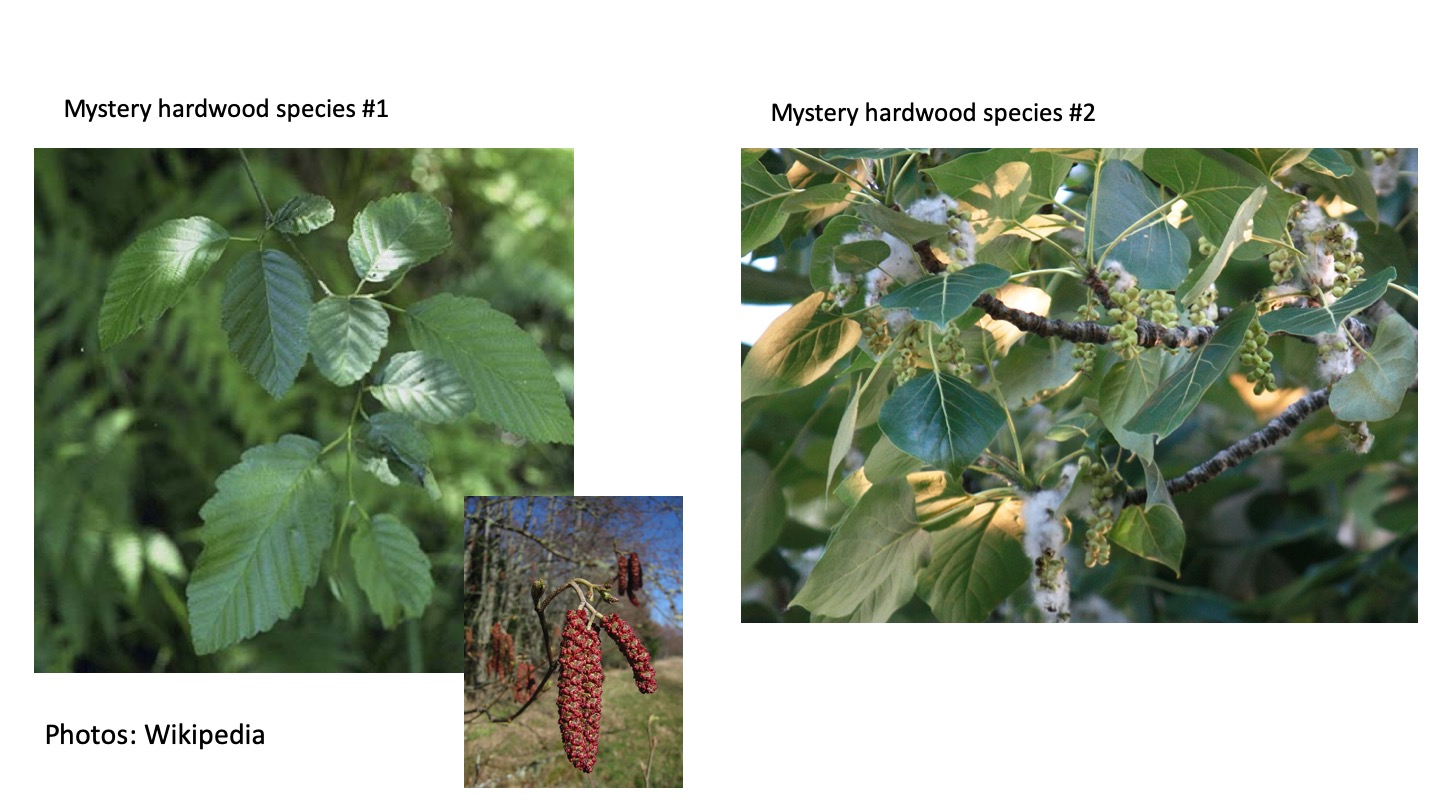
These are the leaves you should look for on the ground to identify. For mystery hardwood species #1, the leaves’ edges are toothed, and it narrows both at the base and tip (widest at the middle). For mystery hardwood species #2, the leaves narrow at the end and are almost as wide as they are long.
Bark Identification Guide
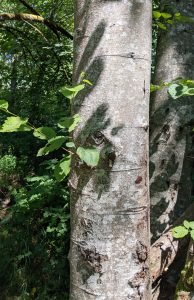
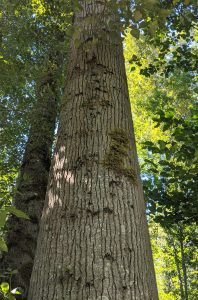
Try to spot the bark of the trees to properly identify mystery hardwood species #1 and #2. The bark of species #1 is light grey and smooth. The bark of species #2 is greyish brown and has deep grooves.
With this information and your dichotomous key, you should be ready to answer the first few questions in the lab.
If you are taking the tour in fall/winter, you may wish to view this picutre of the first stop in midsummer, June 17 2020, with deciduous trees fully leafed out.
Use your key to find their latin binomials and common names. Both species are early successional, and these individuals recruited shortly after site had been disturbed when there was no tree canopy, little competition, and ample light.
What sorts of characteristics do you think these species have that allow them to arrive and thrive in recently disturbed sites (use your text as a reference)? These are adaptations – traits evolved over time, and they help to match the species with the type of environment (e.g., open, recently disturbed sites; shady, undisturbed sites) for which it is specialized.
- Things to consider: 1) “seed size/seed numbers” — there is a tradeoff between the size of a species’ seeds and the number of seed it can produce on limited resources – species tend to produce either many small or a few large seeds; 2) Seed dispersal characteristics: do the seeds have appendages such as plumes or wings, etc., to be scattered broadly by wind, or tasty coverings to attract animal dispersers and be placed in specific locations? More importantly, how do these dispersal syndromes affect the chances of arriving and surviving in particular sites? Hint: species with many, small seeds have a decent chance of at least some arriving in recent openings; species that produce a few large seeds have larger seed nutrient reserves to enable establishment in closed, shady sites where sunlight at the ground may be limited; at the same time, in these coastal forests, most tree species fall into the many-small seeds grouping. Nature often defies our simple attempts at categorization!
Are there other sorts of disturbances that might affect the forest? You might see some clues of more small-scale disturbance in the 360 photo. (Hint: any broken branches? Signs of disease?) A discussion of disturbances, small and large-scale, is found in your text chapter (Strahler and Archibold, Chap 21).
Video on the Forest’s Future
How do you think this site will change in future? In the following video, UBC Geography PhD candidate and former GEOS 102 TA (2018-19), Kevin Pierce (shared with permission), chats about clues that indicate how this early successional hardwood stand may change.
English Holly Site (Stop 3)
Play the video below, in which a biogeographer (guess who?) demonstrates how to date disturbance. She extracts a ring series (tree-ring core) from one of the largest, and oldest, stems at Stop 1. The ring counts and age of this tree will tell long ago it established, indicating the approximate timing of the disturbance event that led to stand initiation at the site (this is species x – the one you identified first).
Boardwalk Site (Stop 4)
Based on the information you learned, what sort of disturbance occurred here? How/Why? Hint: What do you know about Canada’s National animal?

Entering the Needleleaf Forest (Stop 5)
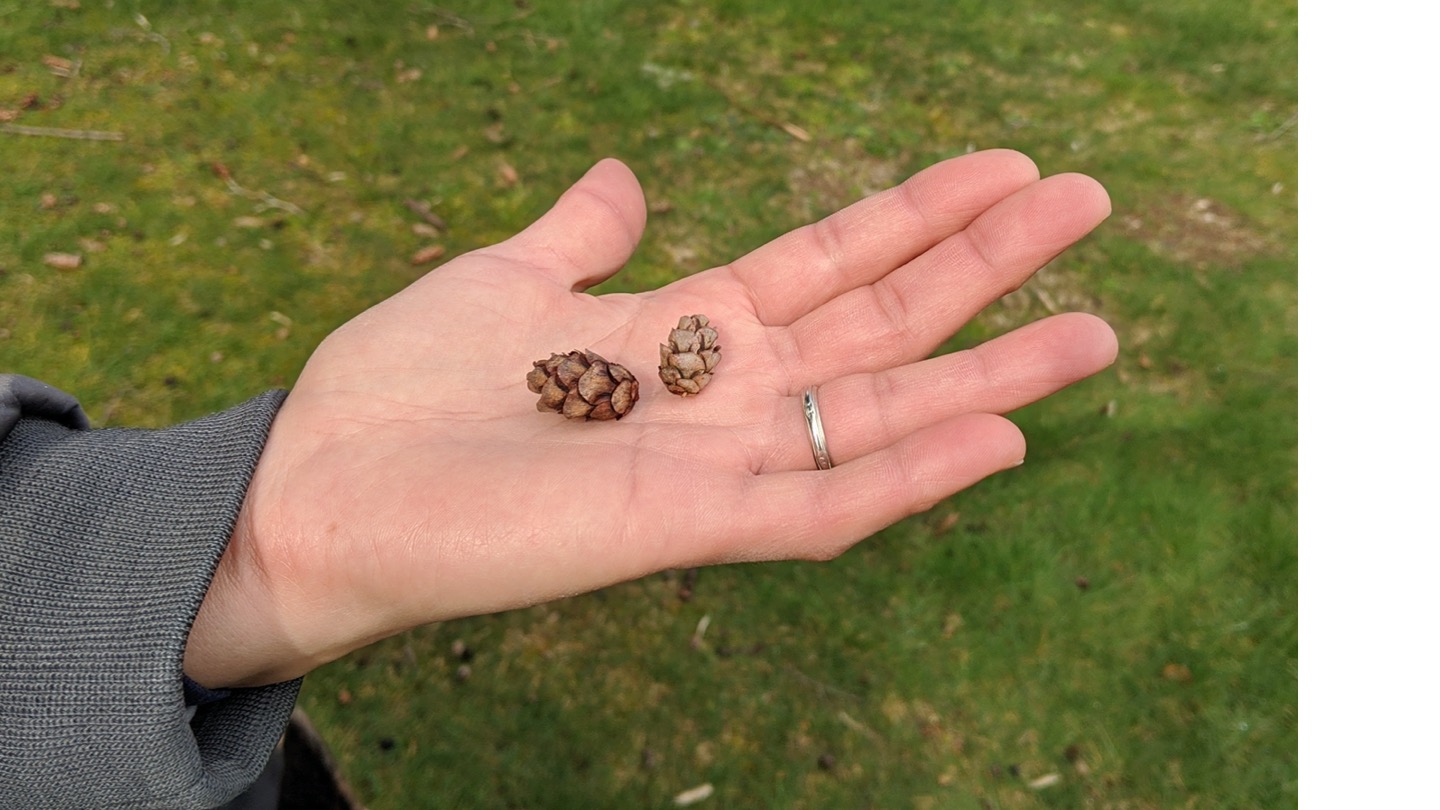
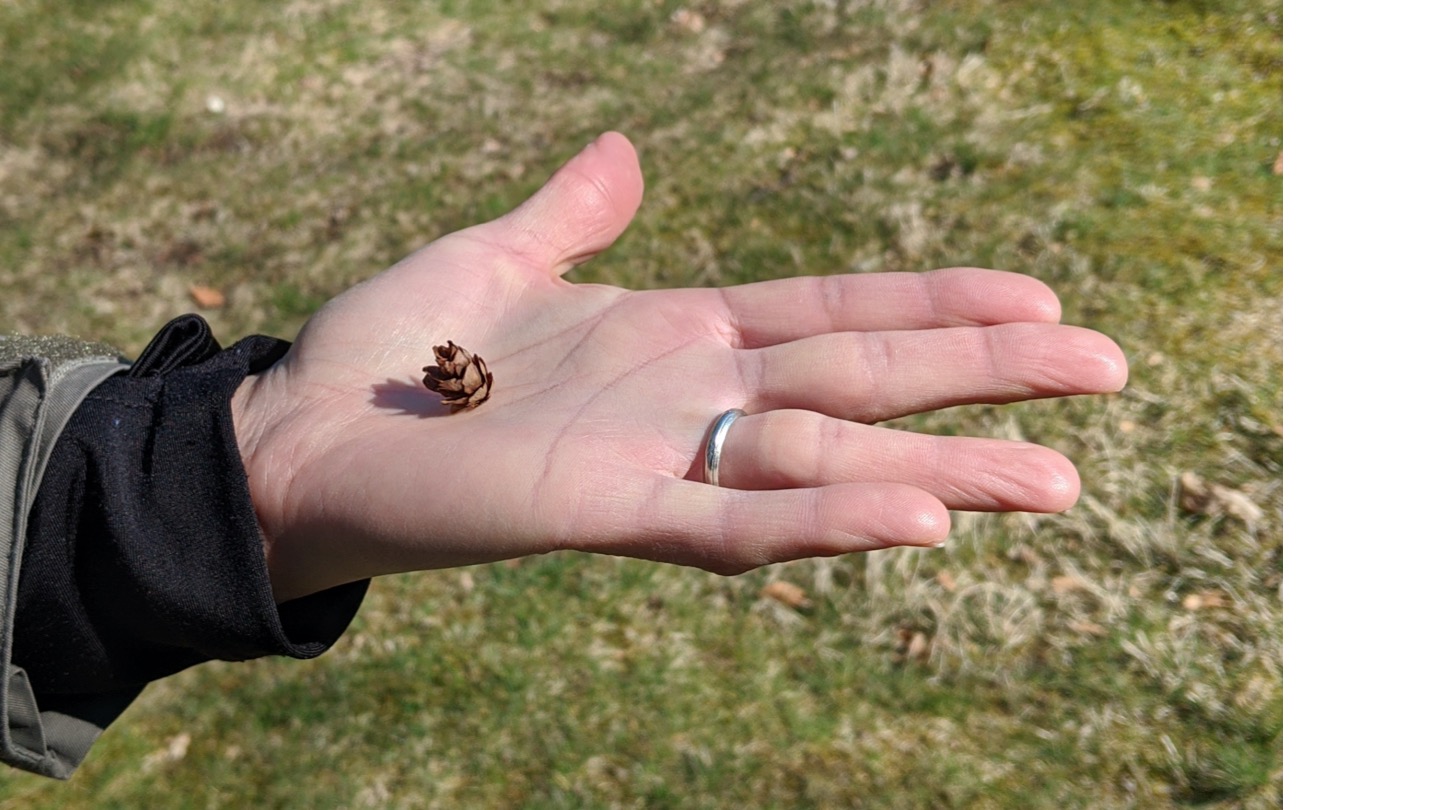
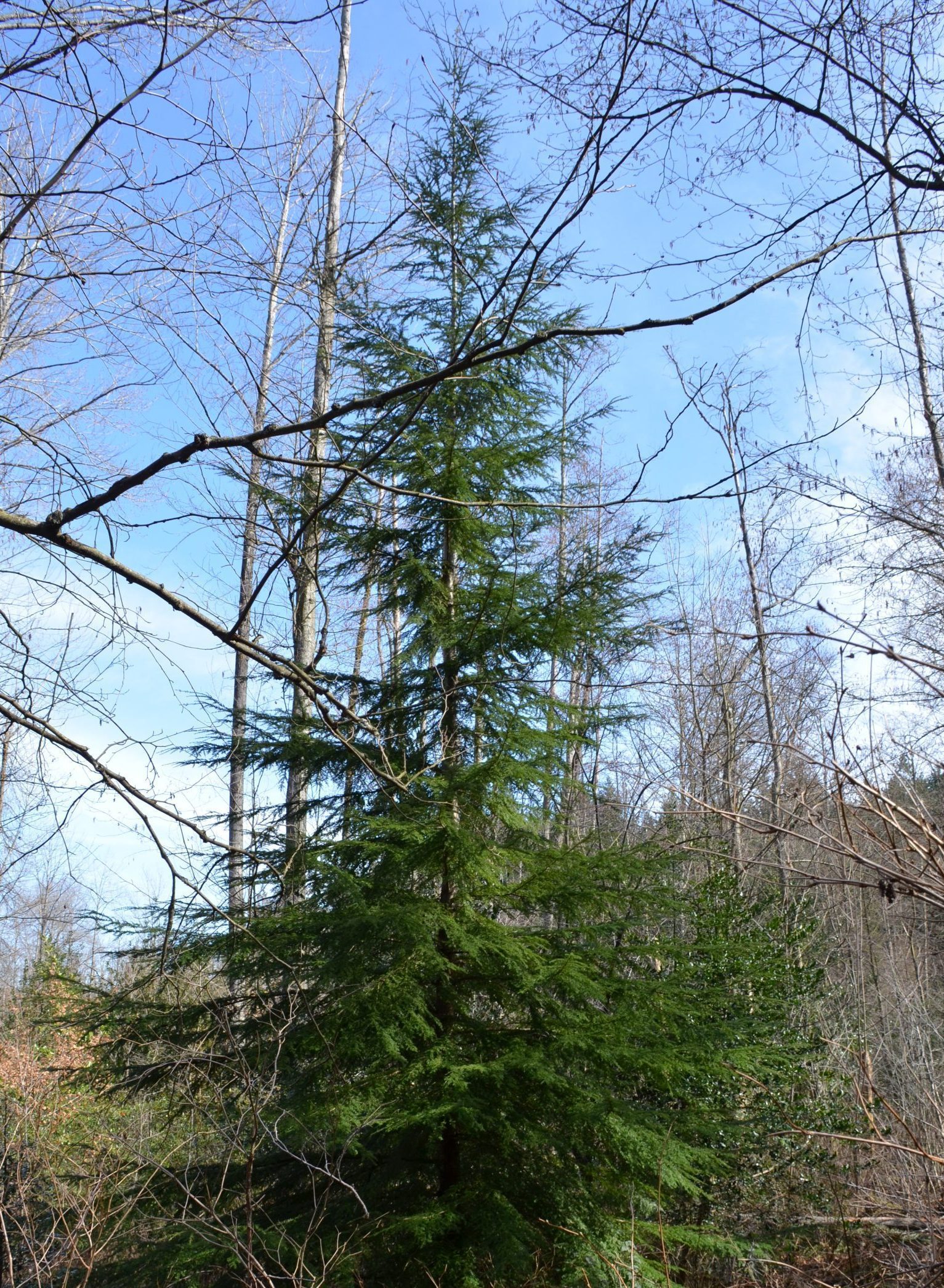
You have entered a remnant of Coastal Douglas fir forest, one of BC’s Biogeoclimatic Ecosystem Classification System (BEC) zones, described in detail here. You’ll notice that the canopy trees are larger and older than those in the hardwood forest, indicating the longer time since major disturbance (and later successional stage) at this site.
Identify the three conifer (needle-leaf) species discussed in the video based on their leaves and bark, using your species id key. In Figure 4 (top), you can see pictures of cones from the first and third needle-leaf species examined in the video (we saw cones of the second type in the video), and (bottom), the species with silver needle undersides heterogeneous needle lengths. This species has an apical meristem (the stem tip or branch leader at the top of the tree) that tilts over like a Dr. Seuss Christmas tree (perhaps not visible in the photo, but something to look for when next you visit a BC coastal forest).
Needleleaf Tree Identification Guide
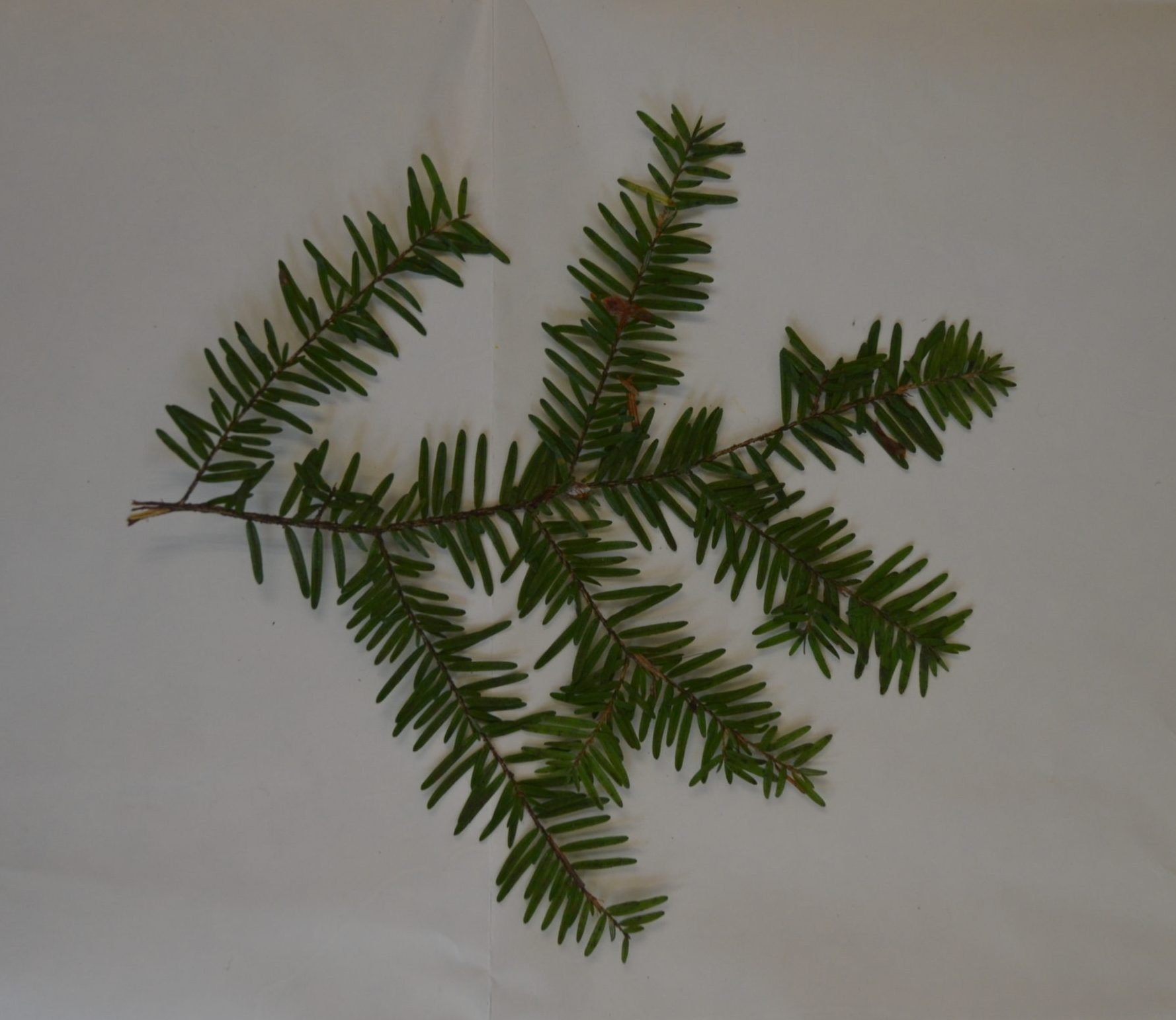
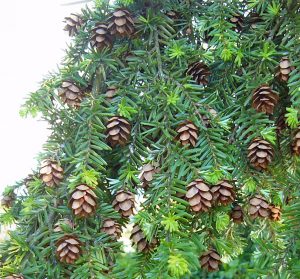
To identify mystery needle-leaf tree #1, look for needles that are flat, blunt and not spiky. They are a lighter colour on the understory than the top. Mystery needle-leaf tree #1’s needles look similar to another needle-leaf species in this area. Don’t mix them up! The needles of tree #1 are uneven lengths! The other tree’s needles are all the same length. As for this tree’s bark, look for reddish-brown bark with fine textured furrows.
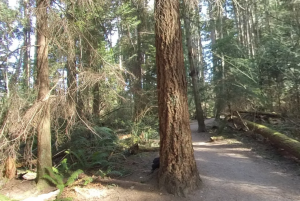
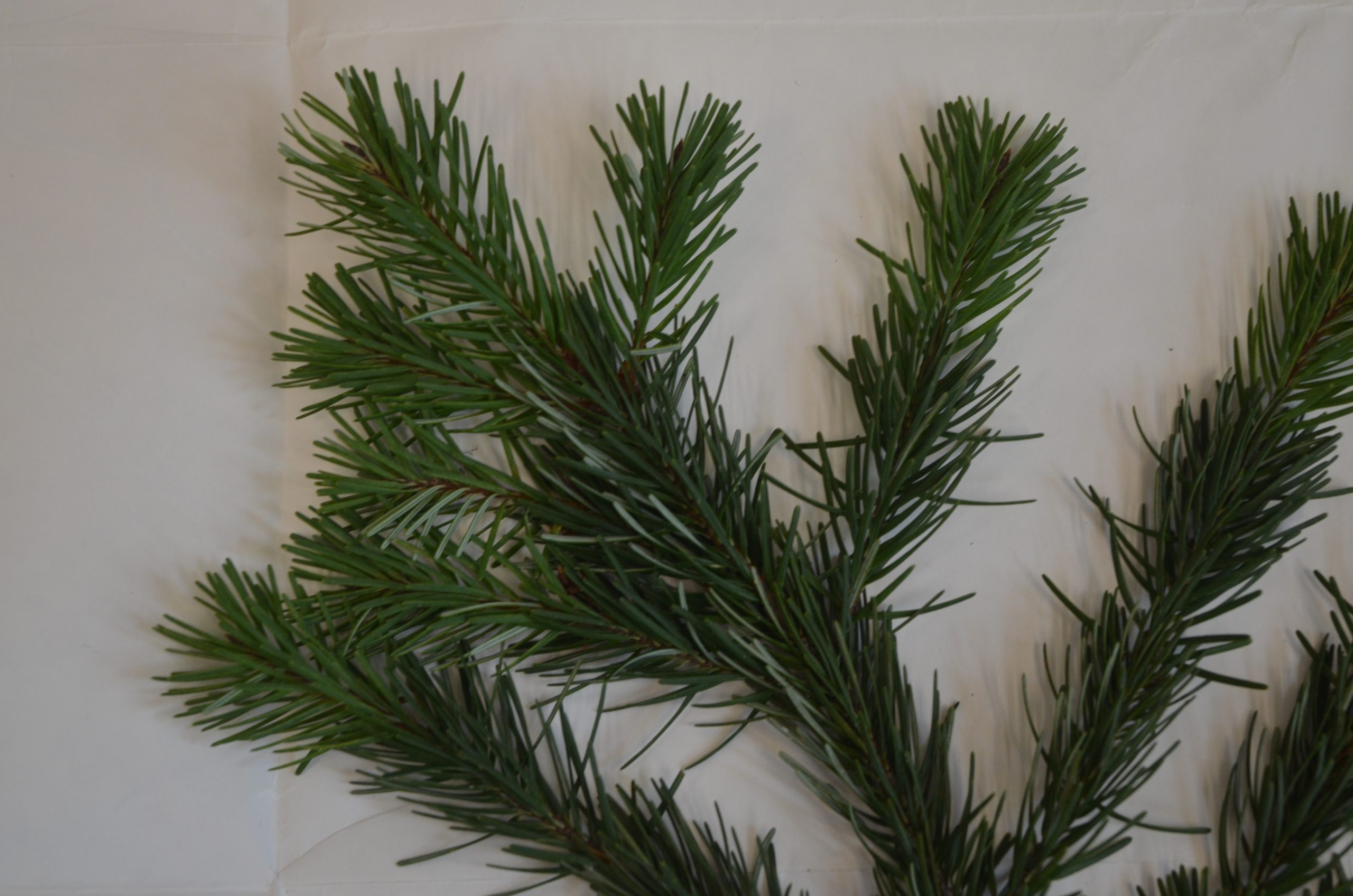
To identify mystery needle-leaf tree #2, look for needles that are flat, smooth and of similar length. They are also pointed at their tips. Its bark is brown and once the tree is mature, the bark becomes thick and deeply furrowed with large ridges.
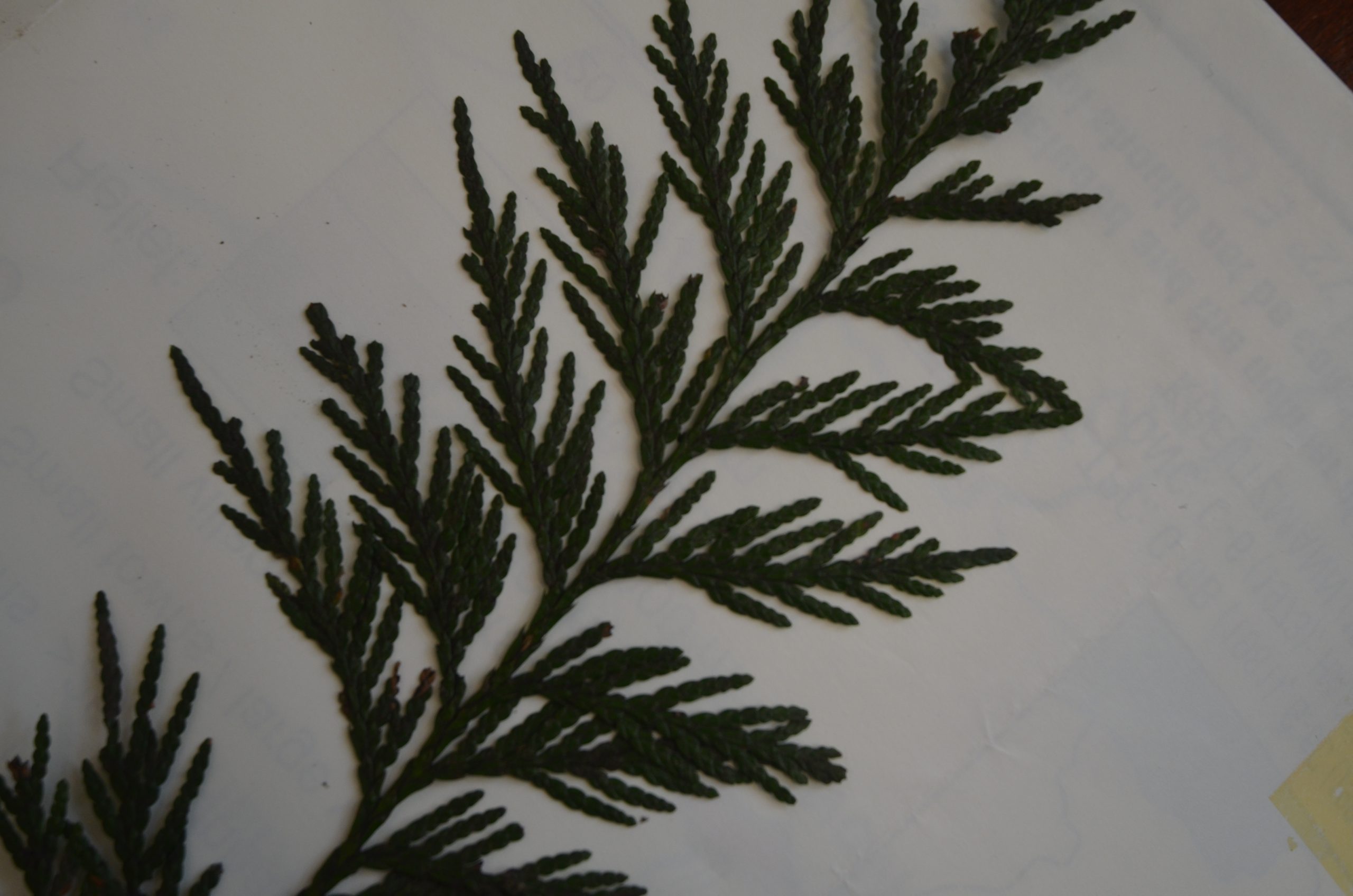
And lastly, to identify mystery needle-leaf tree #3, look for needles that are more like small scales, growing in opposite pairs with the smallest branchlets flattened and overlapping like shingles. Its bark is reddish brown, thin and stringy. It can be torn off in large strips from mature tees and is used by Coast Salish peoples for weaving!
Other native species present in this forest include the understory species of Acer (maple) mentioned in the video with “vine” in its common name (hint) and a canopy species of maple with very large leaves (hint). The latter, large-leaved maple, is actually a co-dominant species in this forest. It is shade-tolerant and reaches the canopy alongside the 3 conifers in late-successional stands. Find both in your Dichotomous key; for precise botanical information on the viney species, watch this Coastal Indicator Plants of BC video. Now, you may wish to try this tree species id knowledge test.
You may notice a large pile of earth with young hemlock trees (saplings) growing on it along the east side of the trail. This is a tree-fall or tip-up mound, an important micro-habitat and “safe site” for many forest species (Huckleberry and Western hemlock, for instance). The term safe site (coined by eminent British ecologist John L. Harper), refers to an establishment site protected from hazards (e.g., burial from leaf-litter) and providing suitable conditions (fresh, exposed soil) for species’ seed to germinate and establish. How does a tree-fall mound qualify? These sorts of micro-habitats become more available in complex environments such as this, where forest trees have had time to live out their life cycles, decay, and created decomposed stump or branch litter, etc.
If you wish you can view a 360 photo of this location in midsummer, June 17 2020. Or try scrolling around this 360 video of the same scene (video resolution is poor, but scene is interesting and has sounds of birds present!).
More about BC’s Coastal Forests, Past and Present:
BC’s southern coastal rainforests are considered to be some of the most productive ecosystems in the world. Their dominant evergreen needle-leaf species retain foliage throughout winter and thus benefit from the large amounts of precipitation that fall during Vancouver’s mild winters. In this environment, deciduous trees (broad-leaf species) are compromised by the fact that they are adapted to lose leaves during cold periods, and can photosynthesize only in summer when moisture becomes limiting. To see the seasonal patterns rainfall and temperature that characterize BC’s West Coast Marine Climate, see your course notes for a climograph, or this link.
As with the first site examined on the tour (the 2nd stop, in the alder forest at the fork), this area experienced large-scale human disturbance (in this case, by extensive logging/tree-cutting), but less recently. See a photo of what this looked like at this link (clearing of Point Grey, 1914, UBC Archives). One can assume that the forest is approaching a size (age) structure and species composition of old-growth forest, and perhaps more closely resembles the historical forest, that would have been common throughout the regions prior to European settlement. That said, it probably lacks the complexity and very large, old (>500 years age) stems that would have occurred here otherwise (see below). How long ago was this site disturbed by logging (how old was the tree I cored, as stated in the audio-recording at that last stop)? Successional changes have thus proceeded for longer than at Stop 1, and this greater time since disturbance helps to explain the difference in species composition and structure between the two sites.
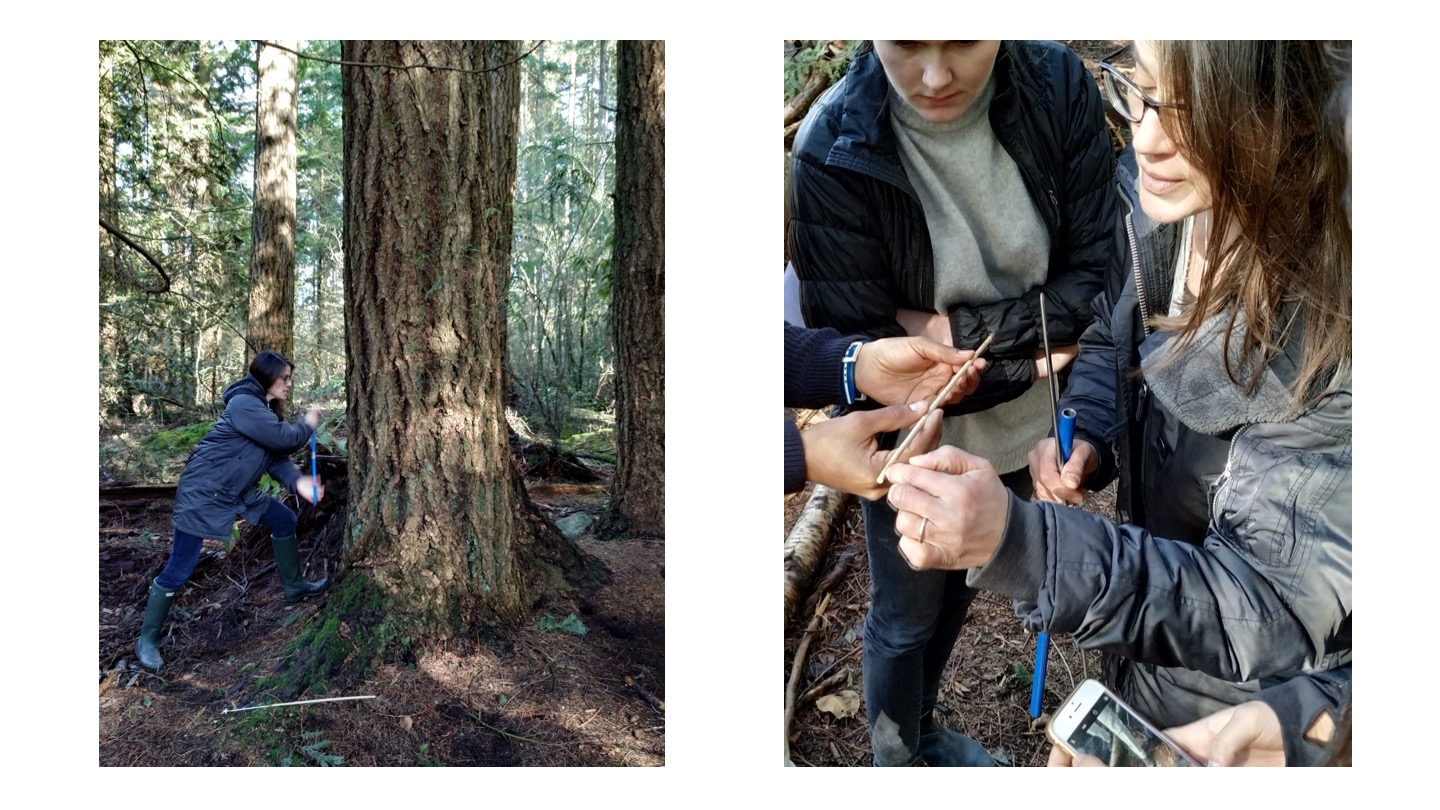
There are other sorts of disturbance here including some more regular, small-scale disturbance. When we take students through this site, we pass some burned out stumps (hint, for question on the lab about other disturbances at this site).
Think about the forest before the logging event. It would have supported stems much. more massive than those present (Fig. 6).
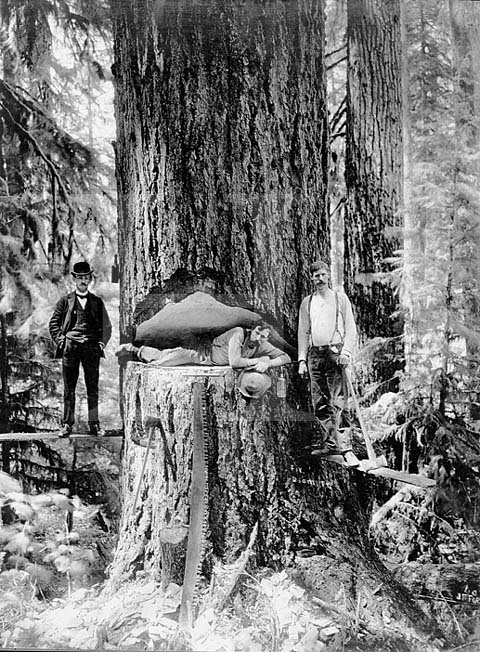
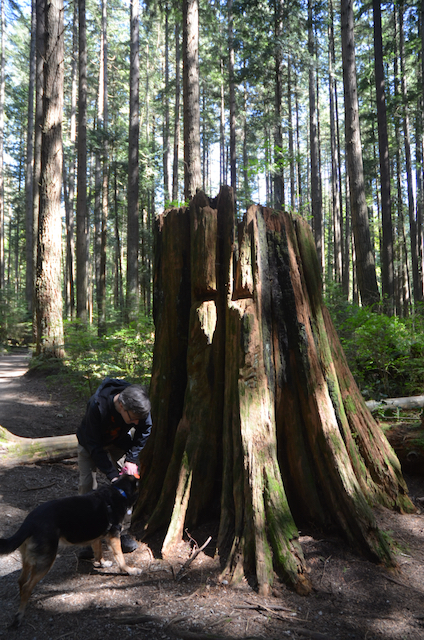
Stumps associated with these wide-scale logging events are found throughout Pacific Spirit forest (Fig. 7). How do you think these extractive forestry practices affected the ecosystem? Would there have been long-term impacts on structure and function? (For some answers and related discussion see here) Of course, disturbance and change is a feature of natural systems, but perhaps the scale of destruction from logging operations was atypical. In this sense, this little piece of Douglas fir forest represents an altered remnant, and is perhaps illustrative of the “Anthropocene”.
Consider how post-settlement forest practices compare to those of the original people of Point Grey, the xʷməθkʷəy̓əm (Musqueum). One Indigenous practice of forest harvesting, cedar bark stripping, was touched on in the video. This was non-destructive: Trees survived, gradually sealing off wood where bark was stripped via cambial tissue growth (growth from cambial cells located just beneath the bark that produce the tree’s annual rings). Affected trees retain residual scars that identify them years later, and are referred to as “culturally modified trees” (CMT). And recent research indicates that Indigenous peoples cultivated gardens that had lasting impacts on the forest structure and diversity in the Pacific Northwest (Armstrong et al. 2021). For example, archaeological village sites were accompanied by groves of perennial fruit (eg, Pacific crabapple (Malus fusca) and nut (Hazelnut (Corylus cornuta) bearing woody species, in otherwise closed needle-leaf stands; and these legacies persisted for up to 150 years, with implications for native wildlife including pollinators.
There is so much more to learn about the Coast Salish (Musqueum, Squamish and Tsleil-Waututh Nations) and other Indigenous peoples, whose legacy is embedded in the history of southern BC’s forest ecosystems. UBC’s Departments of Geography, First Nations and Indigenous Studies, and the First Nations House of Learning are all places to start, if you are keen!
~ Trip End ~
Notes:
For a fully digital version of this field trip, see the following lab exercise, available at:
- The 360 photos and videos for the fully digital tour can be viewed seamlessly in an H5P 360 presentation, found at here.
References and Further Reading:
Armstrong, C., J. Miller, A. C. McAlvay, P. M. Ritchie, and D. Lepofsky. 2021. Historical Indigenous Land-Use Explains Plant Functional Trait Diversity. Ecology and Society 26(2):6. https://doi.org/10.5751/ES-12322-260206
Culbert, P. 2018. Coastal Plants of BC – UBC Forestry videos used with permission. UBC Faculty of Forestry, at: http://bit.ly/BCPlants
Hewitt, N., Chapter 10: Plant Geography (new segments for the 1st Canadian edition) in Arbogast et al. 2018. “Discovering Physical Geography”, 1st Canadian Edition, John Wiley & Sons, Toronto.
Strahler, A.H. and Archibold, O.H. 2011. “Physical Geography”, 5th Canadian Edition, John Wiley & Sons, Toronto.
– Chapter 21, especially sections dealing with “disturbance” (p. 526-9) and “succession” and pioneer species (p. 530-3)
Straley, G.B. and R.P. Harrison. 1987. An Illustrated Flora of the University Endowment Lands. Botanical Garden, Technical Bulletin #12. University of British Columbia, Vancouver B.C.
UBC Geography. 2019. Lab 4 Handout: Soils, Tree Species Composition and Disturbance History in Pacific Spirit Park. In GEOB 102, Our Changing Environment: Climate and Ecosystems, Dept. of Geog., UBC
Acknowledgements
We acknowledge UBC Vancouver Students for providing funding for this project via a TLEF (to NH). The route and framework for this tour is based on a TA-led field lab designed years ago for GEOS 102 by Dr. Greg Henry, UBC Geography.
Creative Commons Licence
Pacific Spirit Forest Echos AR Field Trip by N Hewitt Kelly Hurley, Holly Denson-Camp and Brian Wilson (2021) is licensed under a Creative Commons Attribution-NonCommercial-ShareAlike 4.0 International License. Based on a work at https://blogs.ubc.ca/alpineplants/pacific-spirit-forest-tour/
If you make use of this AR tour or other resources, please let me know, and in which course you have applied these ideas. Thanks! Nina Hewitt, GEOS 102 Instructor, nina.hewitt@ubc.ca


